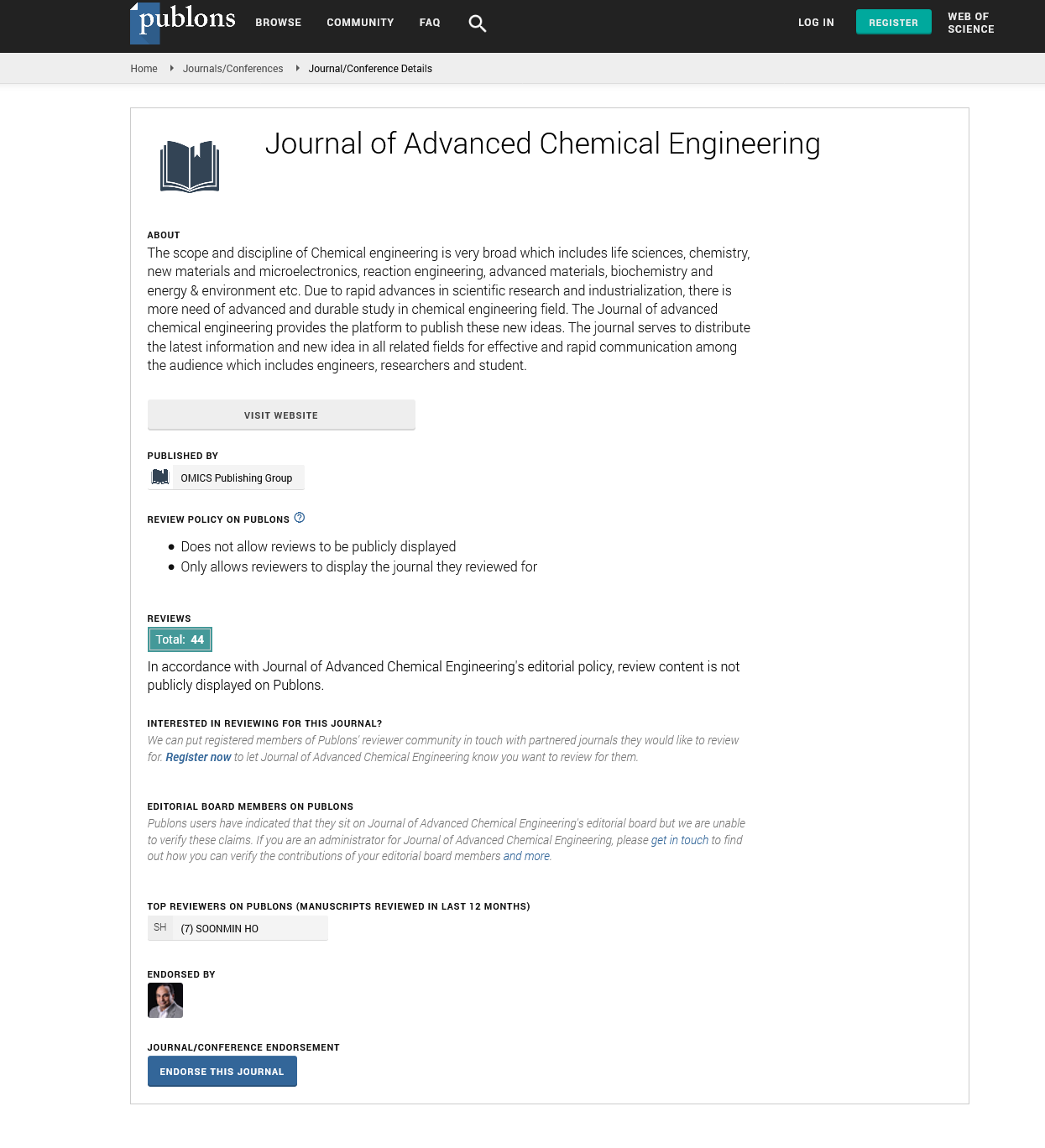Indexed In
- Open J Gate
- Genamics JournalSeek
- Smithers Rapra
- RefSeek
- Directory of Research Journal Indexing (DRJI)
- Hamdard University
- EBSCO A-Z
- OCLC- WorldCat
- Scholarsteer
- Publons
- Geneva Foundation for Medical Education and Research
- Google Scholar
Useful Links
Share This Page
Journal Flyer

Open Access Journals
- Agri and Aquaculture
- Biochemistry
- Bioinformatics & Systems Biology
- Business & Management
- Chemistry
- Clinical Sciences
- Engineering
- Food & Nutrition
- General Science
- Genetics & Molecular Biology
- Immunology & Microbiology
- Medical Sciences
- Neuroscience & Psychology
- Nursing & Health Care
- Pharmaceutical Sciences
Short Commentary - (2023) Volume 13, Issue 3
Understanding Hazardous Chemicals and their Risks, Regulations, and Safety Measures
Hiroshi Takashi*Received: 02-Jun-2023, Manuscript No. ACE-23-22201; Editor assigned: 05-Jun-2023, Pre QC No. ACE-23-22201 (PQ); Reviewed: 19-Jun-2023, QC No. ACE-23-22077; Revised: 26-Jun-2023, Manuscript No. ACE-23-22201 (R); Published: 03-Jul-2023, DOI: 10.35248/2090-4568.23.13.293
Description
Hazardous chemicals play a significant role in various industries, ranging from manufacturing and healthcare to agriculture and research. While these substances are essential for numerous processes and innovations, they also pose significant risks to human health and the environment if not handled properly.
Hazardous chemicals are substances that can cause harm to living organisms or the environment due to their inherent properties. They can be found in various forms, including liquids, gases, solids, or mixtures, and encompass a wide range of substances, such as flammable materials, corrosives, toxins, carcinogens, and reactive compounds.
Hazardous chemicals present several potential dangers
Health risks: Exposure to hazardous chemicals can lead to acute or chronic health effects, including respiratory issues, skin irritation, organ damage, neurological disorders, and even cancer. The severity of the effects depends on factors such as the toxicity of the substance, duration and route of exposure, and individual susceptibility.
Fire and explosion hazards: Many hazardous chemicals are highly flammable or reactive, making them prone to catching fire or causing explosions. Such incidents can result in property damage, injuries, and even fatalities.
Environmental impact: Improper disposal or release of hazardous chemicals can contaminate soil, water bodies, and the atmosphere, causing long-term ecological damage. Aquatic life, plants, and wildlife can suffer severe consequences, leading to ecosystem imbalances.
Regulations and standards
To mitigate the risks associated with hazardous chemicals, governments and regulatory bodies have established strict guidelines and standards. These regulations aim to ensure the safe production, storage, handling, transportation, and disposal of these substances.
Globally Harmonized System (GHS): This internationally recognized system provides standardized classification, labeling, and Safety Data Sheets (SDS) for hazardous chemicals. It enables consistent communication of hazards and ensures workers and users can identify and handle substances safely.
Occupational Safety and Health Administration (OSHA): OSHA regulations outline requirements for workplace safety, including hazard communication, Personal Protective Equipment (PPE), training, and exposure limits.
Environmental Protection Agency (EPA): The EPA regulates hazardous chemical management to safeguard the environment. It enforces rules related to the storage, disposal, and release of hazardous substances.
Safety measures
• Conduct a thorough evaluation of the hazards associated with chemicals used in the workplace.
• Identify potential exposure routes, quantify risks, and develop appropriate control measures. Implement engineering controls such as ventilation systems, enclosures, and safety equipment to reduce exposure levels and prevent accidents.
• Provide appropriate Personal Protective Equipment (PPE), including gloves, goggles, respirators, and protective clothing, to minimize direct contact and inhalation of hazardous chemicals.
• Regularly train employees on chemical handling procedures, emergency response protocols, and proper use of safety equipment. Encourage a culture of awareness and responsible chemical management.
• Follow guidelines for proper storage, labeling, and segregation of hazardous chemicals. Dispose of waste through authorized channels to prevent environmental contamination.
Conclusion
Hazardous chemicals are indispensable in many industries, but they pose significant risks to human health and the environment. Adhering to the regulations, implementing safety measures, and fostering a culture of responsible chemical management are vital to minimize these risks. By understanding the potential dangers and taking appropriate precautions, we can work towards harnessing the benefits of hazardous chemicals while ensuring the safety and well-being of all.
Citation: Takashi H (2023) Understanding Hazardous Chemicals and their Risks, Regulations, and Safety Measures. Adv Chem Eng. 13:293.
Copyright: © 2023 Takashi H. This is an open-access article distributed under the terms of the Creative Commons Attribution License, which permits unrestricted use, distribution, and reproduction in any medium, provided the original author and source are credited.

